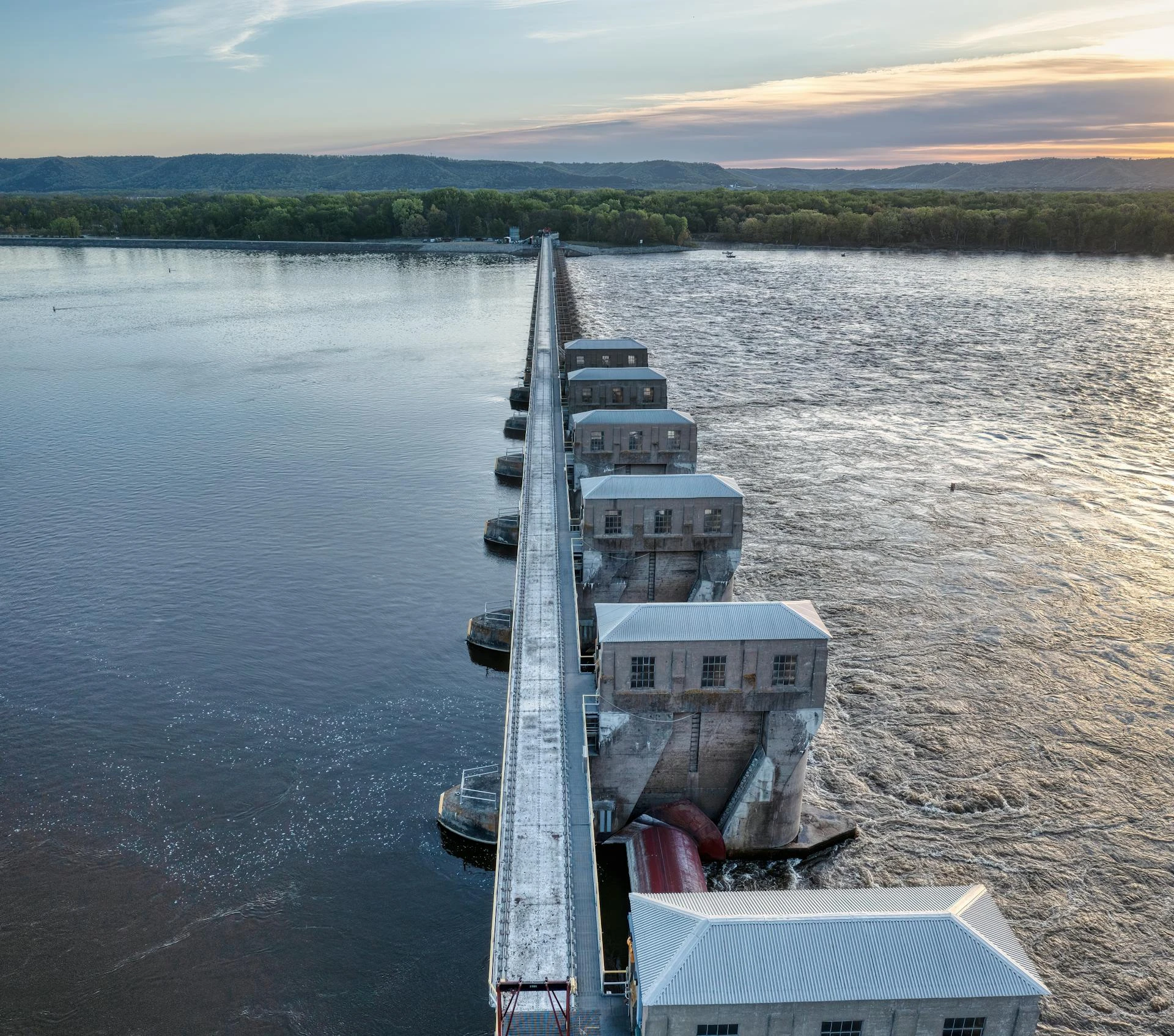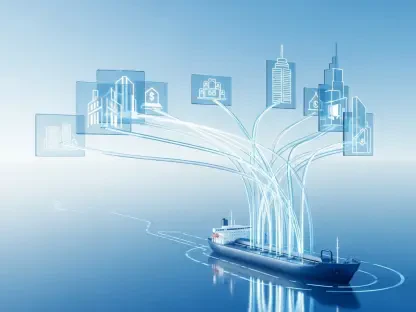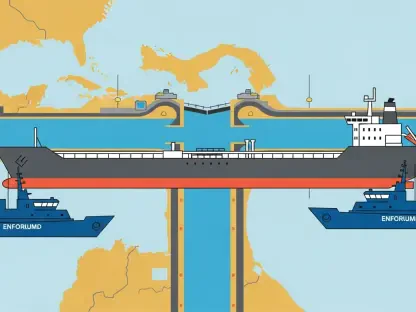The U.S. hydropower industry stands at a defining crossroads, where the decisions made in the coming years could either secure its role as a vital renewable energy source or lead to its irreversible decline. For over a century, since the late 1800s, hydropower has been a backbone of American energy, fueling industrialization and providing clean, reliable power. Yet, with nearly 450 hydroelectric stations—representing over 16 gigawatts of capacity—due for relicensing over the next decade, the sector faces unprecedented challenges. Aging infrastructure, complex regulatory processes, mounting environmental concerns, and fierce competition from cheaper energy alternatives threaten to dismantle this historic pillar of the nation’s energy grid. At the same time, surging electricity demands from industries such as data centers and manufacturing underscore the urgent need for hydropower’s revival. The stakes are immense, as the outcomes will shape not only the future of this industry but also the broader push for sustainable energy in the face of climate change. This article explores the multifaceted hurdles confronting hydropower, from crumbling dams to bureaucratic delays, while also examining the glimmers of opportunity that could steer the sector toward modernization. The path forward is far from clear, but the urgency to act has never been greater as the nation balances energy security with environmental responsibility.
The Burden of Aging Infrastructure
The advanced age of America’s hydropower dams presents a formidable barrier to the industry’s survival. With an average age of 65 years, many of these structures, such as the Glen Canyon Dam in Arizona, were erected long before modern engineering and environmental standards came into play. These dams often lack the necessary features to protect wildlife or ensure long-term safety, requiring extensive upgrades that can cost operators tens of millions of dollars. The financial burden of retrofitting outdated turbines, reinforcing dam walls, and installing new systems to meet today’s regulations is staggering. For many smaller operators, the investment needed to keep these facilities operational far exceeds the revenue they generate, creating a dire situation where maintenance is deferred, and risks accumulate over time. This aging infrastructure isn’t just a technical issue; it’s a looming crisis that could result in widespread closures if the funds for modernization remain out of reach.
Compounding the problem is the growing trend of license surrender among operators who find the cost of upgrades untenable. A striking example is Kelley’s Falls Dam in New Hampshire, where Green Mountain Power opted to abandon its license rather than shoulder the exorbitant expenses of mandated improvements. This decision reflects a broader pattern across the country, where the financial gamble of modernization often leads to retreat rather than reinvestment. Each surrendered license represents not just a lost facility but a reduction in the nation’s renewable energy capacity at a time when clean power is desperately needed. The ripple effects extend beyond individual dams, signaling a potential collapse of confidence in hydropower as a viable sector unless systemic solutions emerge to address these prohibitive costs.
Navigating Regulatory Quagmires
The relicensing process for hydropower facilities is a bureaucratic nightmare that stifles progress and deters investment. Governed by the Federal Power Act of 1920, this process lacks a centralized authority, forcing operators to navigate a tangled web of federal and state agencies, including the Federal Energy Regulatory Commission (FERC) and various local bodies. On average, relicensing takes eight years, but in extreme cases, such as Hells Canyon in Idaho, it has dragged on for nearly two decades. These prolonged timelines create uncertainty, leaving operators on temporary one-year extensions without assurance of long-term approval to plan or invest. The drawn-out nature of these approvals not only delays critical upgrades but also erodes the financial stability of companies already grappling with tight margins in a competitive energy market.
Beyond the sheer length of the process, additional complications arise from extraneous demands imposed by state agencies. Often, these entities leverage relicensing as an opportunity to extract concessions unrelated to dam operations, such as funding for local infrastructure or community projects. While these requests may benefit surrounding areas, they place an unfair burden on hydropower operators, who are already stretched thin by compliance costs. This practice transforms relicensing into a negotiation of unrelated priorities rather than a focused effort to ensure safe and sustainable energy production. Without reforms to streamline this fragmented system, the regulatory environment will continue to act as a chokehold on an industry struggling to modernize and remain relevant.
Environmental Imperatives and Innovations
Environmental challenges stand as one of the most pressing obstacles for the hydropower industry, particularly the impact on aquatic ecosystems. Many older dams were built without fish passage systems, posing severe threats to species like salmon and American eels that rely on unobstructed waterways for migration. Even modern turbines, designed for efficiency, can be deadly to fish, slicing through populations and disrupting delicate ecological balances. The need to mitigate these impacts is non-negotiable under current regulations, but the solutions often come at a steep cost. Retrofitting dams with protective infrastructure is not just a technical challenge but a financial one, pushing many operators to question the feasibility of continued operation in the face of such stringent environmental mandates.
Fortunately, innovative technologies offer a potential path forward, though their adoption remains limited. Traditional solutions like fish ladders, protective screens, and trap-and-haul systems have proven effective but are prohibitively expensive, often costing millions to implement and maintain. Emerging alternatives, such as Natel Energy’s fish-safe turbines with thicker blades, promise to reduce harm to aquatic life while preserving or even enhancing energy efficiency. Despite validation from respected institutions, the slow pace of integrating these advancements into widespread use highlights a gap between innovation and implementation. Bridging this divide will require not only investment but also regulatory incentives to encourage operators to adopt cutting-edge solutions that balance environmental stewardship with economic realities.
Economic Struggles Amidst Competition
The economic landscape for hydropower is increasingly hostile, as the sector faces intense competition from more affordable energy sources. Natural gas, wind, and solar have seen significant cost reductions in recent years, making them attractive alternatives for utilities and investors alike. This shift has eroded hydropower’s market share, with many facilities struggling to remain profitable under the weight of high relicensing and maintenance costs. The result is a troubling decline in capacity, as operators abandon unprofitable dams rather than sink further funds into a losing battle. This competitive pressure threatens to dismantle a key component of the nation’s renewable energy portfolio at a time when grid stability and clean power are paramount.
Yet, amidst these challenges, there are signs of opportunity driven by rising energy demands. Industries such as data centers and manufacturing, which require vast amounts of reliable electricity, are creating a renewed interest in hydropower’s unique ability to provide consistent, on-demand power. High-profile agreements, like Google’s $3 billion deal with Brookfield Asset Management to secure up to 3 gigawatts of hydropower capacity, demonstrate the potential for private sector investment to offset some of the financial burdens faced by operators. These partnerships could serve as a lifeline, injecting much-needed capital into an industry on the brink. However, capitalizing on this demand will require strategic planning and policy support to ensure that hydropower can compete effectively in a crowded energy market.
Policy Efforts and Their Limitations
Recent policy initiatives have aimed to bolster the hydropower sector, though their impact remains constrained by systemic issues. Under the Biden administration, extensions of federal tax credits for dam upgrades have been introduced to incentivize modernization and keep facilities operational. Similarly, political support from the Trump administration, exemplified by the One Big Beautiful Bill Act, has prioritized hydropower in national energy strategies, signaling a bipartisan recognition of its importance. These measures are intended to alleviate some of the financial pressures on operators, encouraging investments in infrastructure that align with contemporary environmental and safety standards. However, the effectiveness of such policies hinges on broader reforms that are yet to materialize.
A significant barrier to these incentives is the lack of clear guidance on how to access and apply tax credits, leaving many operators in limbo. Additionally, the persistent regulatory delays in relicensing undermine the benefits of financial support, as companies cannot commit to upgrades without certainty of long-term licenses. While political backing is a positive step, it falls short without a concerted effort to streamline bureaucratic processes and provide actionable frameworks for implementation. Until these underlying issues are addressed, policy efforts risk being little more than symbolic gestures, failing to deliver the transformative change needed to secure the industry’s future in an evolving energy landscape.
Regional Variations and Global Perspectives
The potential for hydropower in the U.S. varies dramatically by region, reflecting the diverse impacts of climate change and water availability. In the American West, declining water levels have driven hydropower output to a 22-year low, severely limiting the viability of dams in arid states. Conversely, wetter regions like the Northeast may see increased potential as precipitation patterns shift, offering a chance to expand or optimize existing facilities. These disparities complicate the development of a cohesive national strategy, as solutions that work in one area may be irrelevant or impractical in another. Tailoring policies and investments to account for these regional differences is essential for maximizing the sector’s contributions to the energy grid.
On a global scale, the U.S. approach to hydropower stands in contrast to other nations forging ahead with ambitious projects. Countries like China, Brazil, and Ethiopia are investing heavily in new dam construction to meet growing energy needs, while the U.S. focuses on retrofitting and maintaining its existing infrastructure due to environmental and social concerns over large-scale builds. Meanwhile, the untapped potential of non-generating dams—97% of U.S. dams currently produce no power—could add significant capacity if harnessed effectively. Learning from international models while adapting to domestic constraints could provide valuable insights. The challenge lies in balancing innovation with practicality to ensure that hydropower remains a cornerstone of renewable energy without repeating past ecological and social missteps.
Pathways to a Sustainable Future
Looking back, the journey of the U.S. hydropower industry reveals a sector caught between its storied past and an uncertain trajectory. The struggles with aging dams, regulatory gridlock, environmental mandates, and economic competition paint a picture of an industry under siege. Each challenge, from the eight-year relicensing delays to the millions spent on fish passage systems, underscores the fragility of a once-dominant energy source. The decisions made by operators, often forced to abandon licenses as seen with Kelley’s Falls Dam, reflect the immense pressures that have shaped the sector’s decline over recent decades. Yet, amidst these struggles, the persistent demand for reliable, clean power from industries like data centers hints at a latent potential waiting to be unlocked.
Moving forward, actionable steps must be prioritized to steer hydropower toward stability. Streamlining the relicensing process through centralized oversight could slash delays, giving operators the certainty needed to invest. Targeted financial incentives, paired with clear guidelines for tax credits, should encourage the adoption of innovations like fish-safe turbines. Partnerships with private entities, as exemplified by major corporate deals, must be expanded to share the burden of modernization costs. Additionally, a region-specific approach to policy could address disparities in water availability, ensuring that both the arid West and the wet Northeast contribute to national energy goals. By blending regulatory reform, technological advancement, and strategic collaboration, the industry can reclaim its role as a vital component of America’s clean energy future.









